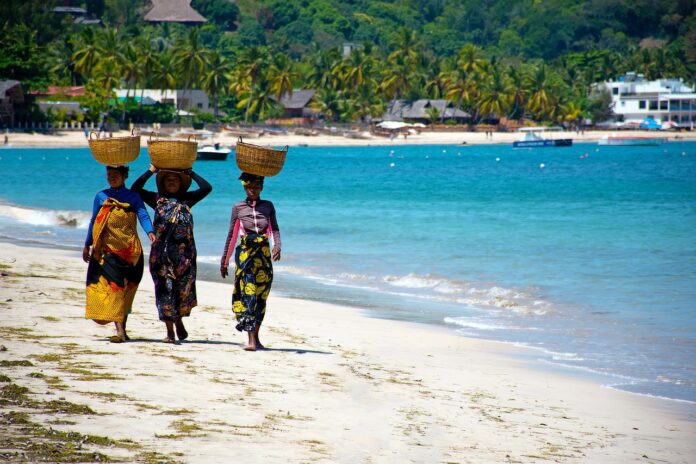Everyone probably remembers the fun animated film about animals from the New York Zoo who decided to return to the wild. Thanks to their adventures, the world once again heard about the vibrant tropical island of Madagascar. However, the idealistic image in the movie doesn’t quite reflect reality, except perhaps for the beautiful landscapes.
Millions of years ago, this piece of land broke away from hot Africa. Since then, this colorful region has developed as a unique ecosystem with endemic flora and fauna found nowhere else on Earth. The island features sandy beaches, coral reefs along the coast, cool leafy forests, a restless dormant volcano, and fertile plains towards the center.
The natural beauty of Madagascar is an undeniable treasure and pride of this place. However, the population of the country lives in poverty. An average family here has no more than $1 a day for food and clothing, not to mention other basic needs. Thus, the island in the Indian Ocean can be seen as a paradox: a paradise for tourists and a struggle for locals.
Interesting Facts
- Area: Madagascar covers about 587,000 square kilometers, making it the fourth-largest island in the world. The entire territory is occupied by the Republic of Madagascar, which was a French colony for a long time until it gained independence in 1960.
- Nickname: The island is sometimes called the “Red Island” due to its red soil, giving parts of the landscape a Martian-like appearance.
- First Settlers: Settlements appeared on Madagascar no more than 2,000 years ago, much later than on the mainland. The first settlers were likely Asians who arrived by canoe from Indonesia or Malaysia, not Africans.
- Matriarchy: In ancient times, Madagascar was ruled by queens, all named “Ranavalona,” with the number indicating the order of their reign.
- Financial Matters: In many families, financial decisions are still made by the eldest woman. She decides what to spend money on and what purchases to postpone.
- Medicinal Plants: Madagascar is home to many medicinal plants, whose value is recognized even by official medicine.
- Vanilla: The island has extensive vanilla plantations. The economy relies heavily on this crop, so when Coca-Cola started using synthetic vanilla instead of natural, many locals lost their jobs.
- Diet: The staple food for locals is rice, forming the basis of many traditional dishes.
- Safety: The island is not the safest place to visit, as tribal clashes can sometimes escalate into armed conflicts.
- Ancestral Worship: The culture of ancestor worship is strong. Every seven years, deceased family members are exhumed, re-dressed in new shrouds, and spoken to politely to ask for blessings.
- Beliefs: Many tribes believe in witches and mermaids and carry chickpeas to ward off evil spirits.
- Languages: The locals speak Malagasy and French. The Malagasy written language now uses the Latin alphabet, though it once used Arabic script.
- Russian Language: At one time, Russian was part of the school curriculum for local children.
- Spider Silk: Removing spider webs is forbidden due to a rare spider species that produces the world’s most expensive silk.
- Sports: Football and rugby are the most popular sports.
- Tipping: Tipping is not customary in Madagascar, so tourists can expect to receive exact change.
- Fossa: A unique predator called the fossa, resembling a cross between a cat and a dog, lives on the island.
- Lemurs: Lemurs are protected by the state and considered sacred. Folklore suggests that humans and lemurs share a common ancestor.
- Pirate State: Legends speak of a pirate state called Libertalia on Madagascar, with its own set of laws.
- Arranged Marriages: Most marriages are arranged by parents, with brides given to the suitor whose family offers the best dowry.
- Bubonic Plague: There are still sources of bubonic plague, with the last outbreak in 2013 resulting in 20 deaths.
- Deforestation: The island is on the brink of an ecological disaster due to illegal logging, with over 90% of forests already destroyed.
- Stone Forest: Madagascar features a unique “stone forest” called Tsingy, recognized as a UNESCO World Heritage site.
- Sapphires: The island is rich in sapphires, with about 50% of the world’s deposits found here.
- Longest Presidential Name: One president of Madagascar had the longest surname in the world, Hery Rajaonarimampianina.
- Elephant Birds: The island was once home to elephant birds, weighing 500 kg, but they have since become extinct.
